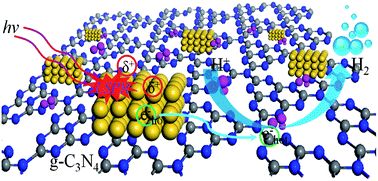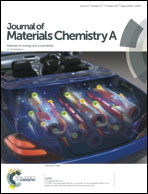Synergetic enhancement of plasmonic hot-electron injection in Au cluster-nanoparticle/C3N4 for photocatalytic hydrogen evolution†
Abstract
Photocatalytic hydrogen evolution driven by abundant sunlight is critical for the effective conversion of renewable energy. Here, we present a combination of Au clusters and nanoparticles (NPs) on a graphitic carbon nitride (g-C3N4) semiconductor to achieve efficient plasmonic hot electron injection for realizing high visible and near-infrared photocatalytic hydrogen evolution activity. Ultraviolet photoelectron and transient photovoltage spectroscopy demonstrate that the synergetic electron coupling between Au clusters and NPs via strong sp2 hybridization with the C3N4 host could effectively tune the semiconductor work function for reducing the metal/semiconductor interfacial Schottky barrier by 0.6 eV, which greatly shortens the injection time and prolongs the average lifetime of energetic hot electrons in C3N4 by one order of magnitude under visible and near-infrared irradiation. Hence, the as-obtained Au cluster-NP/C3N4 photocatalyst achieves a prominent photocatalytic H2 production rate of 230 μmol g−1 h−1 in the light absorption range of 400–900 nm, which is 6–20 times those of its Au NP/C3N4 and Au cluster/C3N4 counterparts.



 Please wait while we load your content...
Please wait while we load your content...